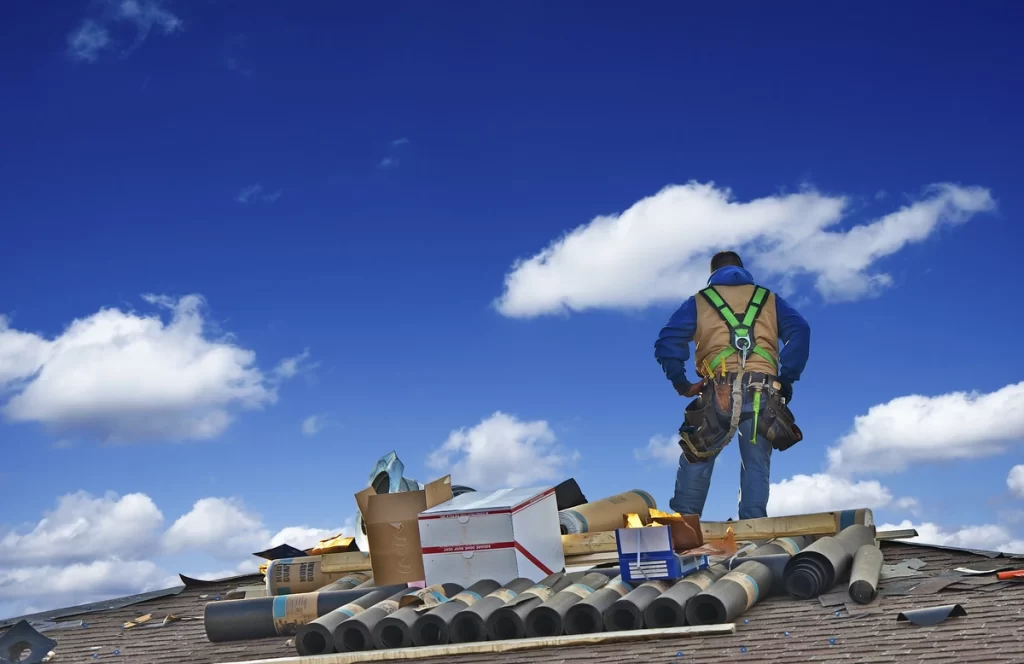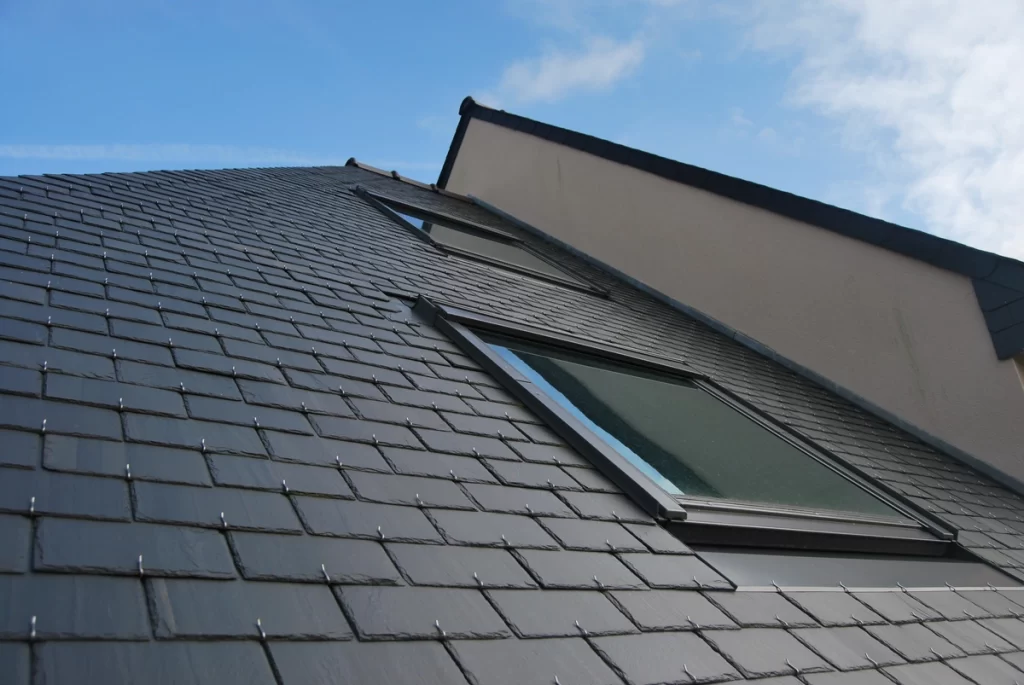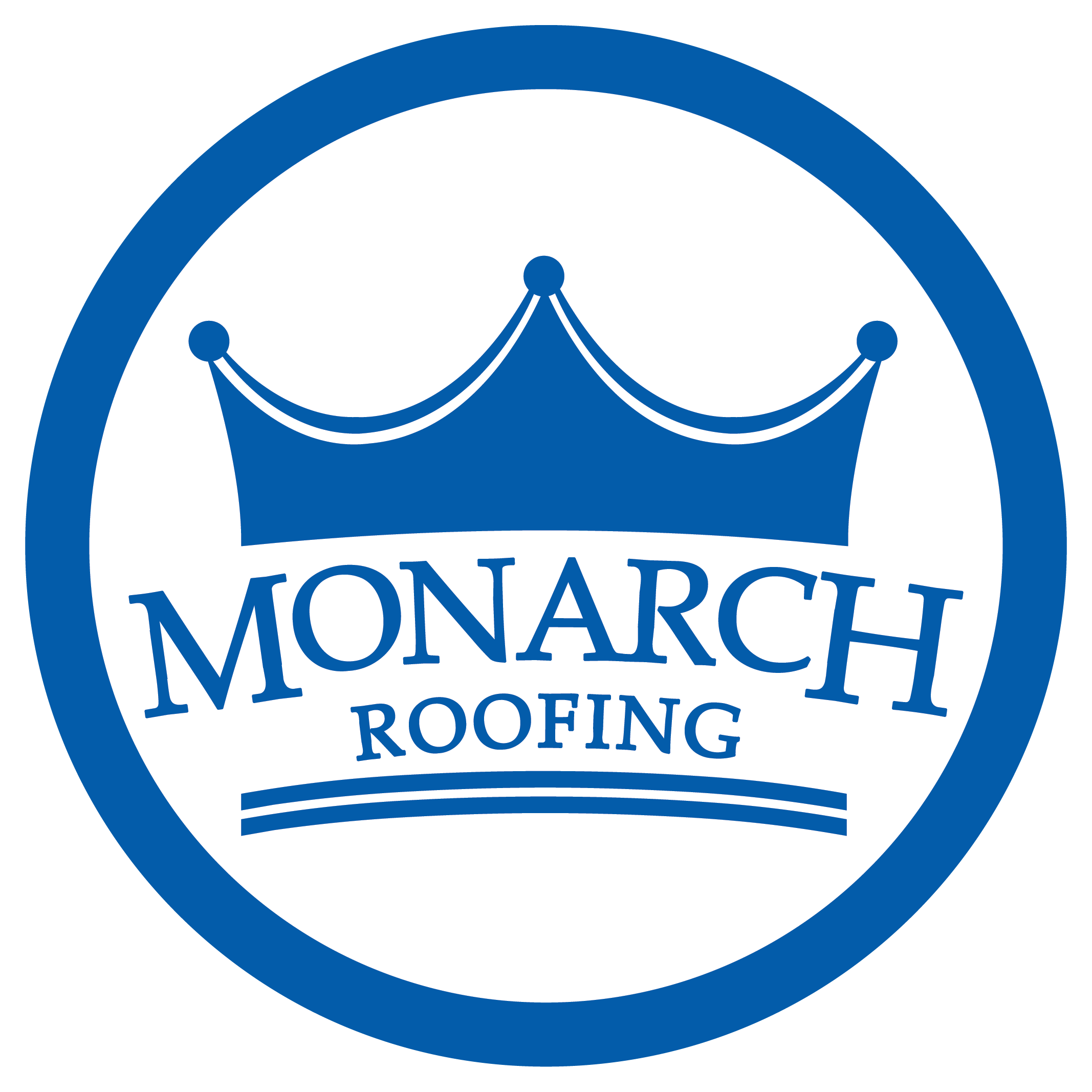When it comes to roof repairs or replacements, understanding the process and costs involved is crucial. Are you looking for a roof replacement? Repairs? And ready to move to the next step? But with every source on the internet quoting a different price, how are you supposed to budget accordingly?
The answer? A roof estimate.
A roof estimate is an essential part of the roof replacement process, as it provides homeowners with a breakdown of the anticipated expenses. In this blog post, we will delve into:
- What a roof estimate is
- How professionals calculate the final cost
- Roofing material options available
By the end, you will have a better understanding of what to expect and make informed decisions when it comes to your roofing needs. Ready to get started? Keep reading!
What Is a Roof Estimate?

A roof estimate is an assessment provided by a roofing contractor that outlines the expected costs for a roof repair or replacement project. It serves as an itemized breakdown of the materials, labor, and any additional services required. A thorough estimate helps homeowners understand the scope of work involved and the associated expenses. It is essential to obtain multiple estimates from reputable contractors to compare prices and ensure the best value for your investment.
Many contractors will offer roof estimates or quotes at no extra cost to you! Be sure to ask your local roofing contractor if this is a service they provide.
How Is the Final Cost Calculated?
Roofing contractors consider several factors when calculating the final cost of a project. Here are some key elements that influence the estimation:
- Roof Size and Shape: The square footage of your roof is a significant factor. The larger the area, the more materials and labor will be required. Additionally, the shape of the roof, such as steep slopes or multiple angles, may increase the complexity and, consequently, the cost.
- Roofing Material: The choice of roofing material greatly impacts the final cost. Different materials come at varying price points and offer distinct advantages and longevity. We will explore various roofing material options in detail later in this article.
- Roofing Layers: While we don’t recommend it, some homeowners opt for re-roofing, which is adding another layer of shingles on top of the existing roof. If your roof has multiple layers that need to be removed before installing the new roof, it will add to the labor and disposal costs. The number of existing layers should be considered during the estimation.
- Accessibility: The accessibility of your roof also plays a role in the cost calculation. If your roof is easily accessible, it reduces the labor and time required. However, if there are obstacles like trees, nearby buildings, or limited access points, it may increase the overall cost.
- Roof Pitch: The roof pitch or roof slope affects the complexity of the installation process. Steeper roofs often require additional safety measures and may involve more labor, leading to higher costs.
- Roofing Components: Other elements of the roof, such as flashing, ventilation systems, skylights, chimneys, and gutters, can impact the overall cost. The condition of these components and whether they need repair or replacement will be factored into the estimate.
- Local Regulations: Building codes and permit requirements may vary by location. Contractors consider these factors during estimation as they can affect the cost and timeline of the project.
6 Roofing Material Options
Choosing the right roofing material is crucial for both aesthetic appeal and long-term durability. If you are looking to estimate roof replacement costs for your home, take these roof material costs in consideration!
1) Asphalt Shingles
The most common and affordable option, asphalt shingles offer versatility and come in a wide range of colors. They are easy to install, low maintenance, and provide good protection against the elements. That being said, they are also the roof material with the shortest lifespan, lasting only 15-20 years. This means that while you may save when it comes to initial roof costs, you may pay more in the long run for roof replacements.
2) Metal Roofing
Known for its longevity and durability, metal roofs have become increasingly popular. They are available in various styles, including steel, aluminum, and copper. Metal roofs are lightweight, fire-resistant, energy-efficient, and can last 40 to 70 years. They’re also known for easy maintenance, particularly for those that live in snowy climates. That being said, they also will add significantly to your overall roofing costs, as the material costs $9-$16 per square foot.
3) Wood Shakes and Shingles
Offering a natural and rustic look, wood shakes and shingles provide excellent insulation and energy efficiency. However, they require regular maintenance to prevent rot, mold, and insect infestation. They sit firmly in the middle when it comes to longevity, lasting around 30 years with proper maintenance. Be aware that they will likely change appearance over time, starting as a warm orange color and generally turning dark brown or gray with age.
4) Slate Roofing

Highly durable and visually appealing, slate roofs are renowned for their elegance and longevity. They are resistant to fire, rot, and insects. While they require professional installation and are relatively expensive, slate roofs can last over a century. The oldest roofing material on this list, slate roofing also wins the prize for the heaviest material and often needs a reinforced roof deck in order for your home to bear the weight.
5) Clay and Concrete Tiles
Popular in Mediterranean and Spanish-style architecture, clay and concrete tiles add a unique charm to a home. They are long-lasting, energy-efficient, and require low maintenance. However, they are heavy, so the structure needs to be able to support the weight. Additionally, they are particularly brittle, which means that things like hail can lead to the shingles needing to be replaced. Replacing a few clay or concrete tiles is going to be more expensive than asphalt shingles!
6) Synthetic Roofing Materials
Synthetic materials like rubber, PVC, or composite shingles mimic the appearance of other roofing materials while offering enhanced durability and weather resistance. They are lightweight, eco-friendly, and often more cost-effective. While they can be cheaper than their natural counterparts, they are also more likely to cost a pretty penny.
So, What Is the Average Cost?
Now that you have all the information, you can understand how a roofing cost estimate is made. But what are the average costs, anyway?
National averages have general roof replacements costing $10,000-$15,000. However, that is just an average. That number is likely to increase if you have a particularly large home or if you choose a premium material. In those cases, you may be looking at a project that lands anywhere between $15,000-$30,000.
A thorough understanding of roof estimates, cost calculation factors, and material options is essential for homeowners embarking on a roof repair or replacement project. By obtaining multiple estimates, considering the various cost factors, and exploring different roofing materials, you can make informed decisions that suit your budget, aesthetic preferences, and long-term needs. Remember to engage reputable roofing contractors who can provide accurate estimates and ensure high-quality workmanship. A well-informed approach will not only protect your home but also provide peace of mind knowing that your roof is in good hands.
Looking for a Contractor?
Want to work with a reputable contractor who will offer reasonable quotes and provide you with excellent workmanship? You need Monarch Roofing! From small roof repairs to major roof replacements, we’ve seen and done it all. Contact us today to learn more about our services!





